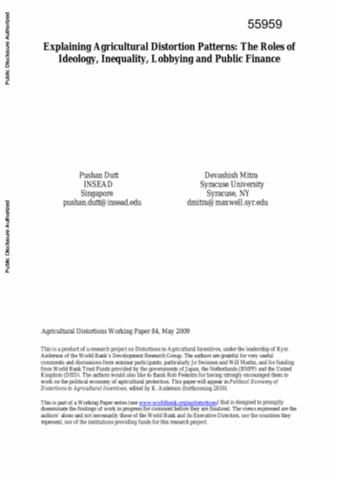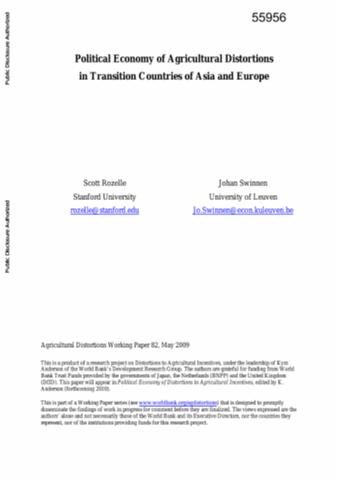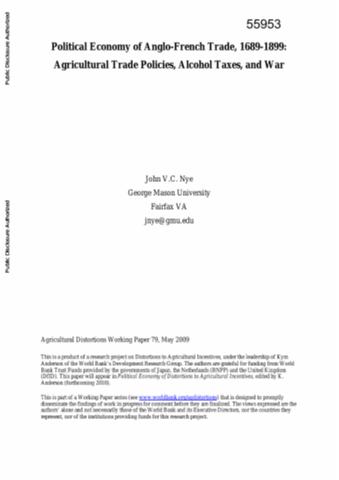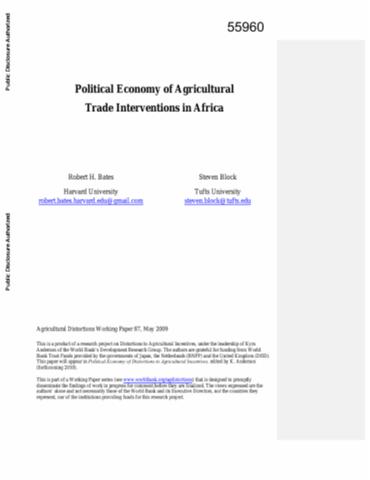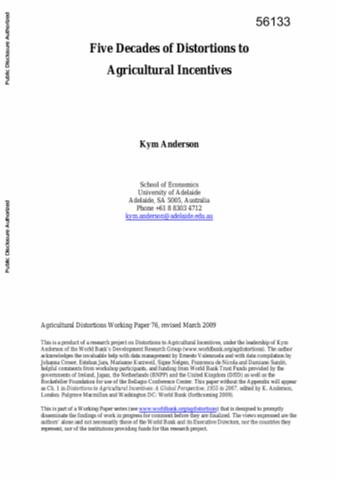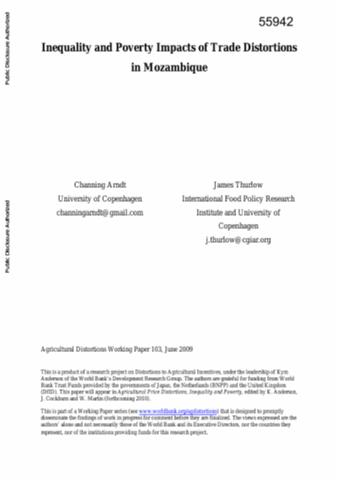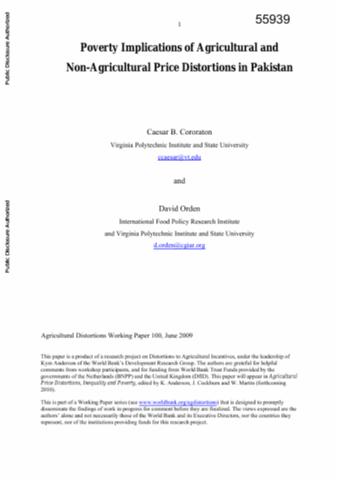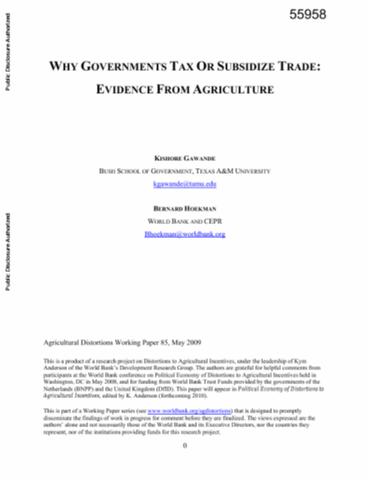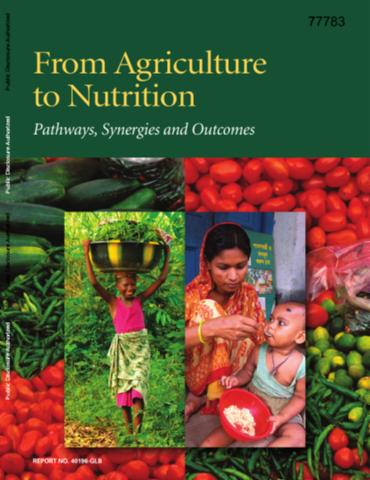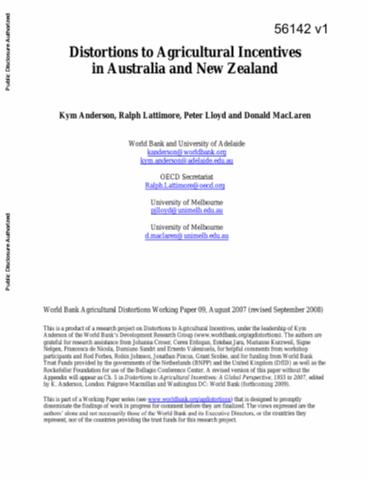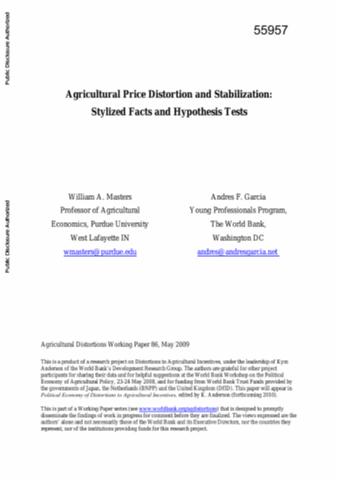Explaining Agricultural Distortion Patterns
In this paper, the authors examine the political economy drivers of the variation in agricultural protection, both across countries and within countries over time. The paper starts by listing the key insights provided by both the theoretical and empirical literature on the political economy of trade policy formulation. The authors then set out a basic framework that allows us to put forth various testable hypotheses on the variation and evolution of agricultural protection.

